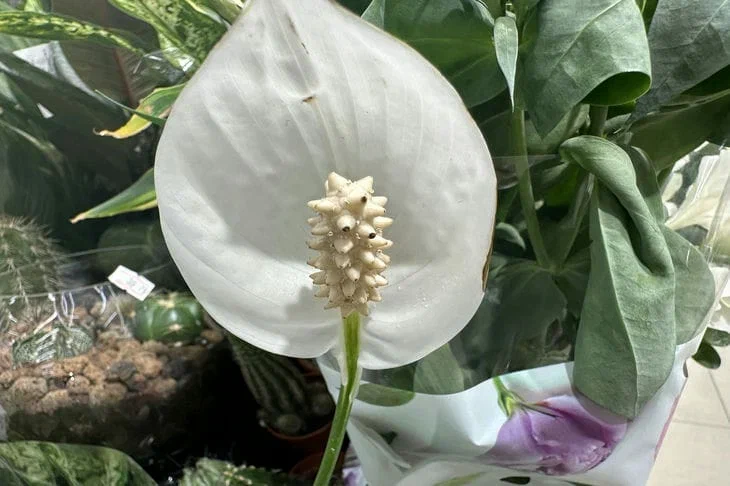Winter sometimes turns into a real test, not only for people, but also for their “green pets”.
For example, in the cold season, the leaves of the spathiphyllum often begin to dry out.
There are several reasons for this unpleasant phenomenon – let’s look at them all and find out what to do in each specific case.

1. This kind of trouble can happen to a flower if the air in the room is not humid enough due to heating devices.
Spathiphyllum, as a true child of the tropics, needs high humidity.
To help the plant (and the inhabitants of the house) buy a humidifier and regularly spray the leaves of the spathiphyllum, using soft water for this.
You can also place the flower pot on a tray filled with wet expanded clay.
2. The next reason, of course, is improper watering.
Due to overdrying of the soil, the leaves begin to lose moisture, while excess liquid is fraught with root rot.
What to do? From time to time, conduct a check-up or, simply put, a soil test.
It is worth watering the spathiphyllum when the soil is slightly damp, but not wet. By the way, only water at room temperature is suitable for this purpose.
3. Spathiphyllum may also develop dry leaves due to a lack of light. To solve this problem, move the pot closer to the window or use additional light sources (phytolamp).
4. But even if you are determined to help the flower cope with the lack of sunlight, you should not leave it too close to the window glass - here it can get too cold.
Drafts can also damage spathiphyllum, so if you notice dry leaves on it, move the plant to a warmer place and place a substrate under the pot to protect the roots from the cold.
